Connecting HR, PMO and functional lines for effective resource management and talent retention
 i2e Consulting
i2e ConsultingResource management in pharma project teams: A brief background
In life sciences organizations the need for faster time-to-market for drugs is critical with precision, timelines, and compliance as non-negotiable must-haves. Prolonged project timelines and complex divisional inter-dependencies emphasize managing resources optimally to enable a faster and smoother drug development lifecycle.
Managing resources is not a single department job, there requires a continuous collaboration between functional lines, HR and the PMO to proactively respond to outsourcing/ in-house talent acquisition, FTE vs. Contractors. This partnership between functional lines, HR, and project resource management also identifies key positions with a complete clarity of roles and assignments leading to improved relationships with managers with colleagues seeing a clear connection between work and organizational goals.
In this blog, we explore the impact of cross functional collaboration, how technology can help achieve system integrations, and transparency across the three divisions.
Impact of Cross-functional collaboration: leveraging HR, functional lines, and the PMO:
Effective resource management collaboration is one where HR, functional lines and the Project Management Office (PMO), directly influence the success and efficiency of drug development and other scientific projects. The PMO roles & responsibilities in conjunction with functional lines ensuring whether human talent, equipment, facilities, budget and time are allocated optimally across complex and concurrent projects. In high-stakes environments where timelines are tight and compliance critical, planning foresight, cross-divisional teamwork, and shared resource management are essential to avoid costly delays and failed outcomes.
Role of PMO
The PMO whether centralized or embedded
Ensures the right skilled professionals are available when and where they are needed most.
Monitors resource utilization to prevent overallocation or underuse.
Collaborates closely with operations functions ensuring critical assets like lab manufacturing equipment or testing facilities are used efficiently.
Uses forecasting tools and data analysis with PPM to anticipate resource needs, enabling proactive adjustments.
For successful project delivery, the PMO also focuses on process and governance. With digital advances the ability to connect central PMO plans live to functional lines resource management is now a reality. This has allowed the PMO to evolve into a strategic function that not only oversees project resource management but also plays a central role in managing human capital across the organization.
Role of HR
HR is a key partner enabling functional lines deliver projects to avert resource onboarding delays
Aligns talent supply with project demands based on skills, availability, and timelines.
Minimizes turnover in critical roles through engagement and career planning.
Upskills employees to meet technical and regulatory requirements.
Recruiting specialized resources to support evolving R&D needs.
Key non-personal data, skill set, grade information, training status, can be siloed in HR data systems with limited access for resource management needs. The PMO, along with the functional lines can combine this information to track engagement levels ensuring the right talent is assigned to the right teams.
Role of functional lines
The centralized or functional lines offer resource allocation clarity on physical resources, budgets, execution timelines and how these align with project plans.
Allocates skilled resources to projects based on expertise and availability
Balances project and functional priorities to avoid resource conflicts
Monitors performance and development of team members across assignments
Provides technical oversight to ensure quality and alignment with scientific goals
Supports resource forecasting through input on capacity and skill gaps
Enables knowledge transfer across projects to maximize efficiency and learning
Functional lines also focus on lab space, production equipment, materials, and scheduling, etc. If the PMO is planning a clinical trial and needs lab time or manufacturing resources, Ops ensure those are available when needed. If a drug development project is moving into the manufacturing phase, functional lines work with the PMO to block out production lines and coordinate supply deliveries, while functional lines ensure the right technicians are trained and ready.
The PMO acts as the central connector, pulling together people and information from different departments so everyone is on the same page.
HR, PMO, and the functional lines communicating closely together support long-term talent development through targeted upskilling, mentoring, and coaching programs aligned with project demands.
Decisions on how to address resource gaps may involve re-training or bringing in contract staff early if there’s a skills gap by responding to functional lines and PMO requests. This kind of advanced workforce planning in conjunction with HR makes sure the team is ready before the project hits full speed.
However, data visibility gaps, and lack a single source of truth may cause roadblocks in creating the much-needed synergy between PMO, HR and functional line managers.
When certain data from key technology systems is integrated, data can be seamlessly flown from various departments, want to learn how technology can break data silos and promote seamless collaboration between HR, PMO and functional Lines? Read on.
How custom solutions enable resource management in a cross-functional collaborative way?
Many life sciences companies are using enterprise level PPM tools for effective resource management and collaboration between departments, however, due to expensive licensing costs, the functional line managers may not have the visibility of into the broad level project plans within the tool. There is also poor visibility for essential non-portfolio projects visibility that is tracked outside the PPM tool.
This is where a resource management framework can be a game changer. It is a flexible framework which seamlessly integrates with your existing PPM and HR systems to provide a comprehensive view of the resources and forecasting plans down to the functional manager level.
This can serve as a digital trigger for identifying training and knowledge gaps as soon as named resources are assigned to forecast work. Using sophisticated AI, it suggests the right training and connects people to important internal resources—making sure everyone, from lab staff to leadership, stays aligned.
It's also a valuable partner across the organization, supporting PPM for workforce colleague well-being and talent retention by giving better visibility into how talent is used, balancing workloads, and encouraging a strong, high-performing project culture. Plus, it works smoothly with your current PPM tools without getting in the way of your daily work

Figure - Custom resource management differentiators
Single source of truth
It helps untangle the resource allocation complexity by providing a unified platform where everyone, from PMs to HR business partners to Functional Leads, can access and work with real-time data. This single source of truth eliminates confusion around who’s assigned to what, what skills are available, and where gaps exist, allowing teams to focus on their own role while staying aligned with others.
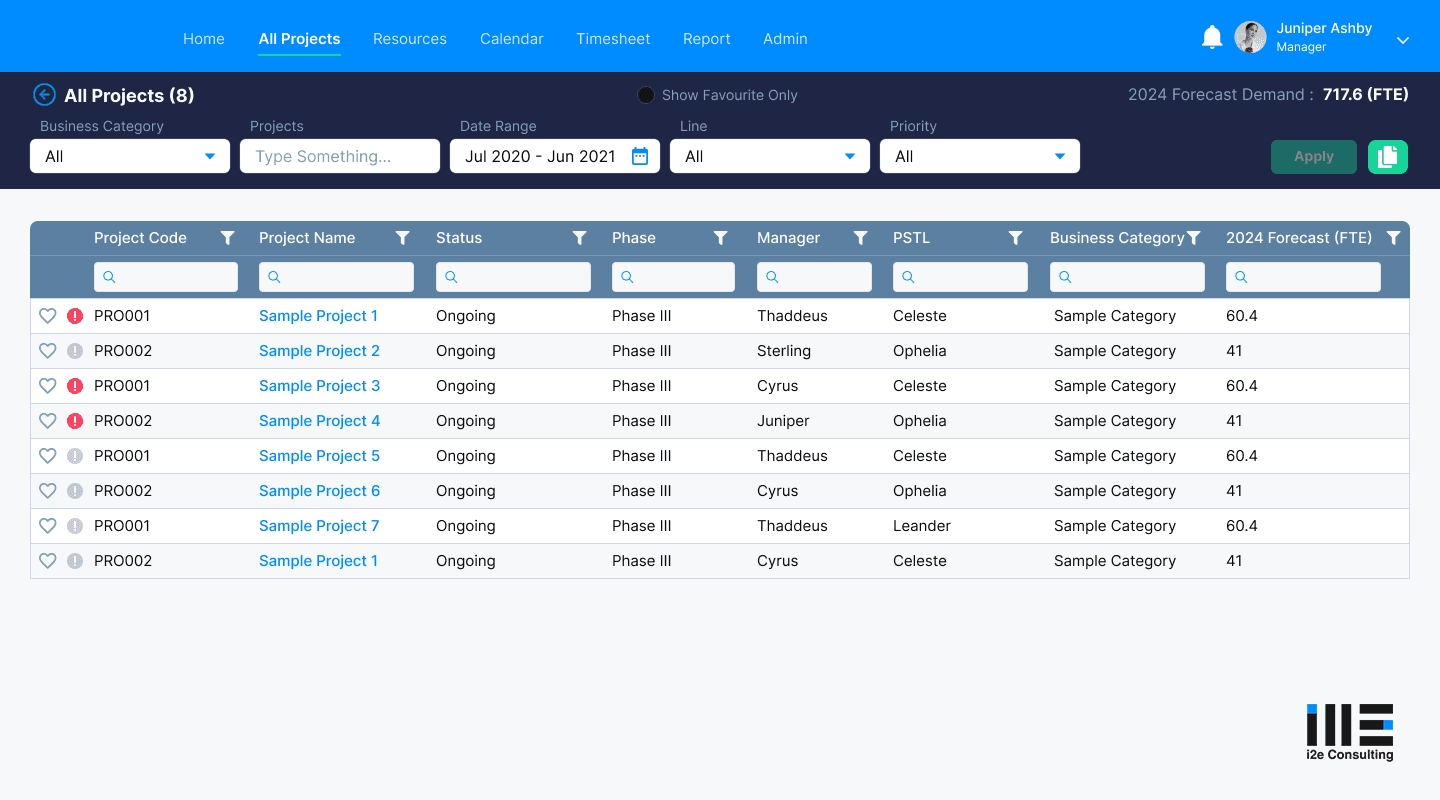
Figure - Project overview
Cross-functional data integration
One of the biggest pain points in shared resource management and cross-functional collaboration is the disconnect between resource forecasting and the availability of resources in reality. The custom resource management framework bridges this gap and integrates existing project planning and PPM system benefits with data from HR systems, time tracking platforms and operations teams.
When the PMO builds a forecast, for example an upcoming clinical development plan, they can see if the needed resource – a pharmacovigilance expert or a clinical data manager is available or not. In case there is a shortfall, functional lines can be alerted early with HR support to begin proactive hiring and training, redistributing resources. With data analytics looking at the trends of demand (forecast) vs capacity vs named allocation an enriched data set is available to inform long-term workforce development, new business models and real-time synchronization between individual teams to prevents last-minute scrambles and delays.
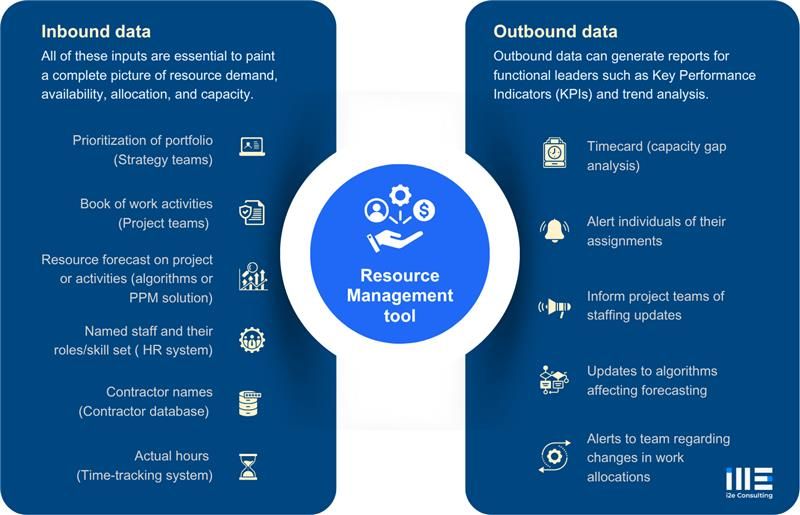
Figure - Shared resource management data
Ownership of tasks
In most life science organizations, the PMO is responsible for coordinating and forecasting project needs, HR manages hiring, onboarding, and training frameworks, and functional line managers handle deployment and resource usage. Custom resource framework supports all by clearly defined ownership of tasks across functions, departments, teams, groups, down to named individuals providing ultimate flexibility to manage your workforce. These boundaries are supported by structured workflows within the platform, which ensures each team knows what they’re accountable for. This removes friction, eliminates duplication of efforts, and builds trust between divisions and teams.
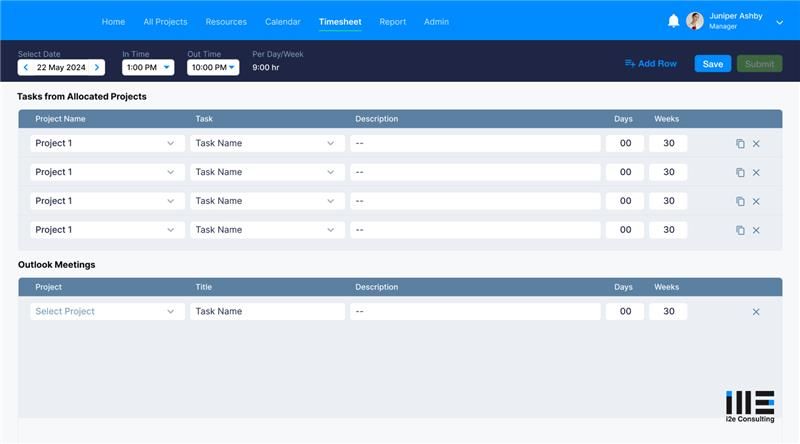
Figure - Task overviews
360-degree resource visibility
The custom resource management framework supports collaboration by offering personalized dashboards and reports for each department, making it suitable for successful project resource management. Fully customizable to your organization construct and operations model, HR can monitor attrition trends, training completion rates, and skill gaps. The PMO can view project-wise utilization and forecast accuracy. Operations can track functional capacity and site-specific allocation. This tailored insight empowers teams to make informed decisions and work in harmony toward common goals.
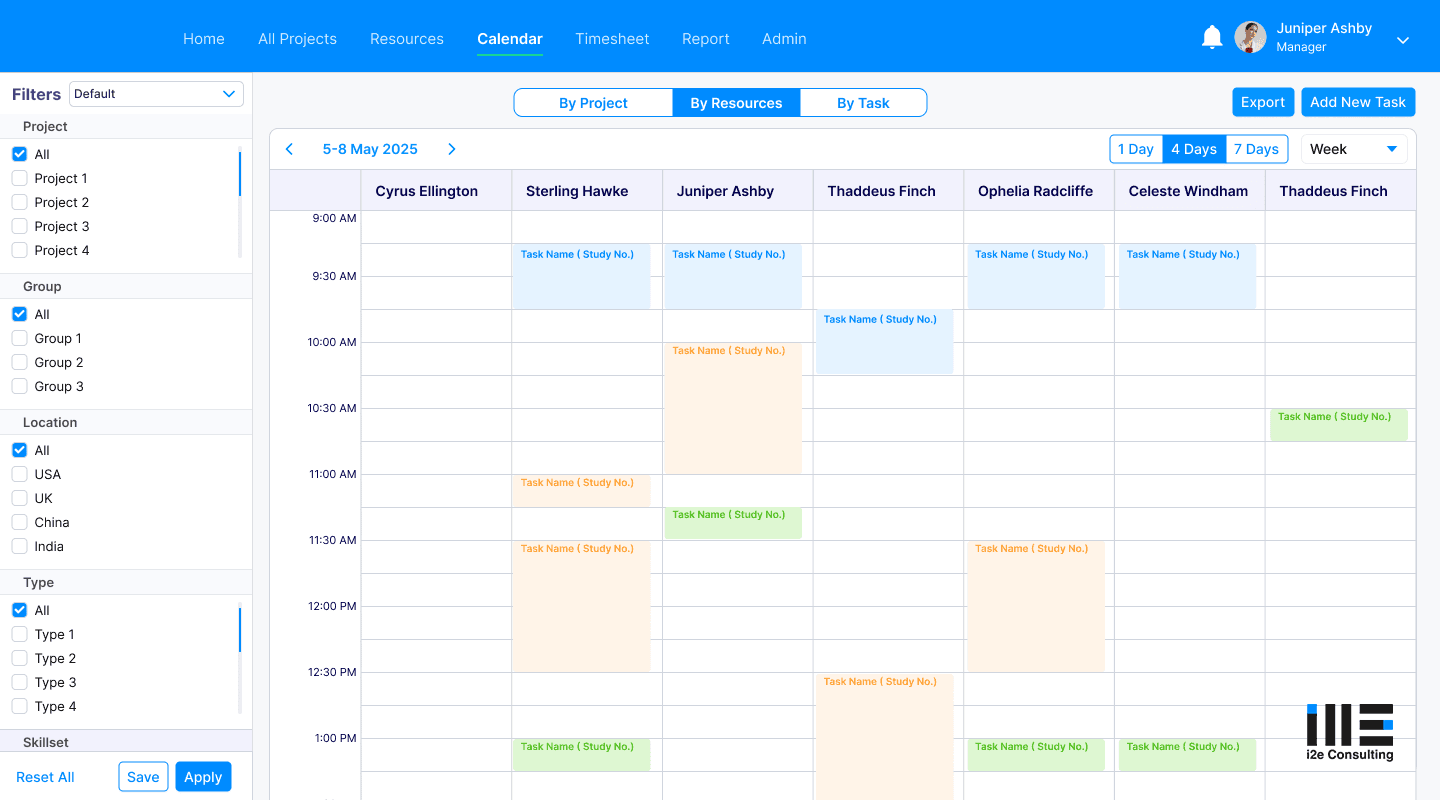
Figure - Complete resource visibility
Automated resource updates and alerts
Another strength of custom resource management framework is its ability to automate alerts and updates. When a resource is reassigned, needs training, or has a scheduling conflict, custom resource management framework notifies the right people instantly. This level of automation reduces manual tracking and ensures that changes are communicated across all teams without delay.
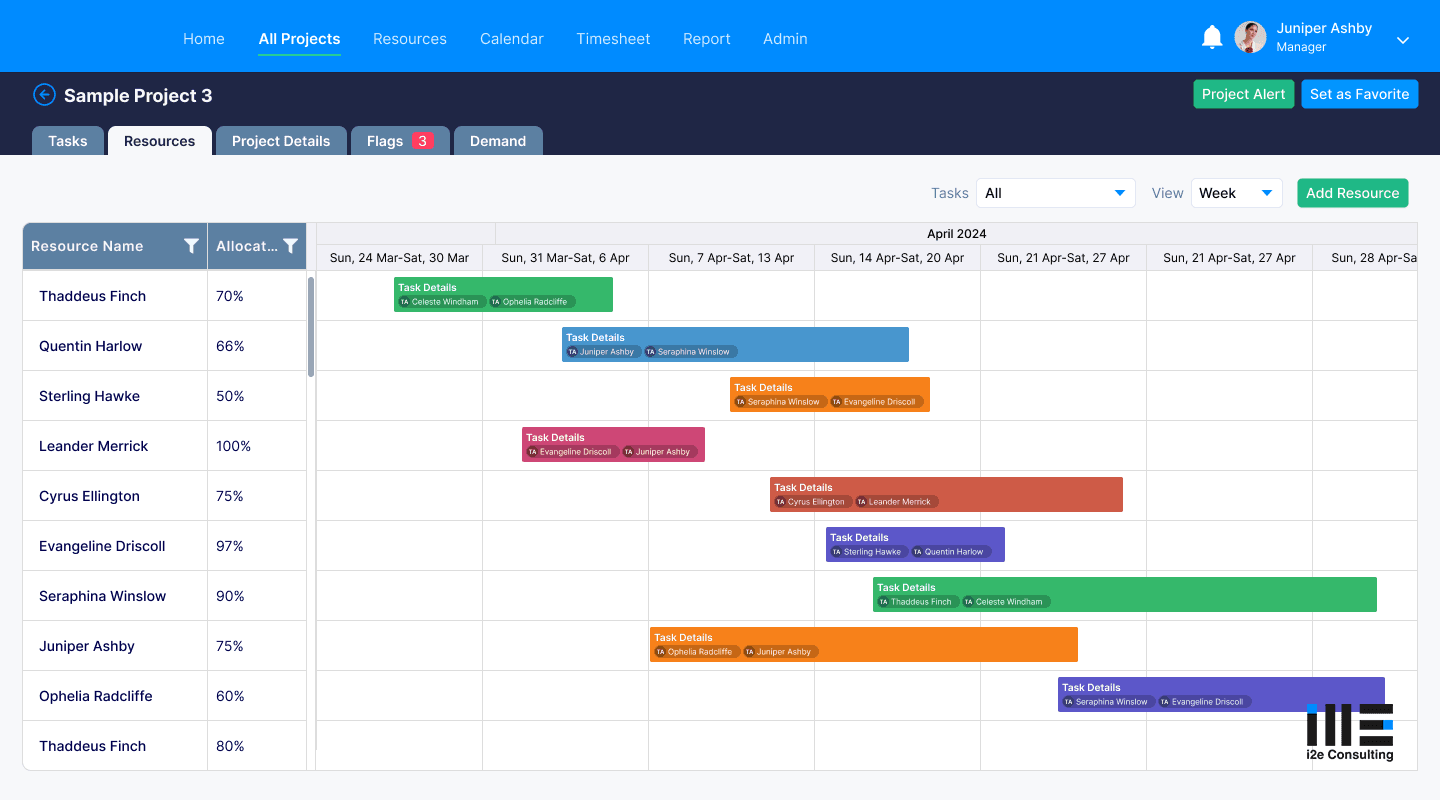
Figure - Automated alerts for resources
Seamless integration with larger tech stack
The custom resource management framework fits into your existing tech landscape. This differentiates it from other purpose-built frameworks. Whether the organization uses Workday for HR, MS Project or Planisware for PPM, or custom tools for time-tracking expertise, assuming data links are pre-established, this custom resource management framework integrates seamlessly without much effort helping you stay ahead of competition. As a result, there's no need for disruptive software changes, which makes adoption smoother and collaboration easier across functions.
Conclusion
In PPM for workforce management, custom resource framework brings clarity, accuracy, and confidence to decision-making. It eliminates bottlenecks, prevents underutilization, and ensures cross-functional planning is based on real-time data. By enhancing visibility and transparency, custom resource management framework directly empowers PMO roles and responsibilities and helps align resources, manage capacity, and drive portfolio execution. It enables functional teams to collaborate effectively, building trust across the organization.
Having supported life sciences companies for over 15 years, at i2e, we’ve seen firsthand that as portfolio scale and complexity increases, tools like Alloc8 are no longer “nice-to-have”, but are business-critical digital solutions.
In today's dynamic fast paced data-driven world where work processes are rapidly evolving through ML / AL, can you afford to not be conducting named allocation? The answer is a resounding no. With the help of these business-critical digital solutions, you streamline processes, aid communication and hence accelerate product delivery, that is valuable in the longer term. This, in turn, impacts talent growth and retention gained through the visibility of resourcing decision making.
Subscribe to my newsletter
Read articles from i2e Consulting directly inside your inbox. Subscribe to the newsletter, and don't miss out.
Written by
